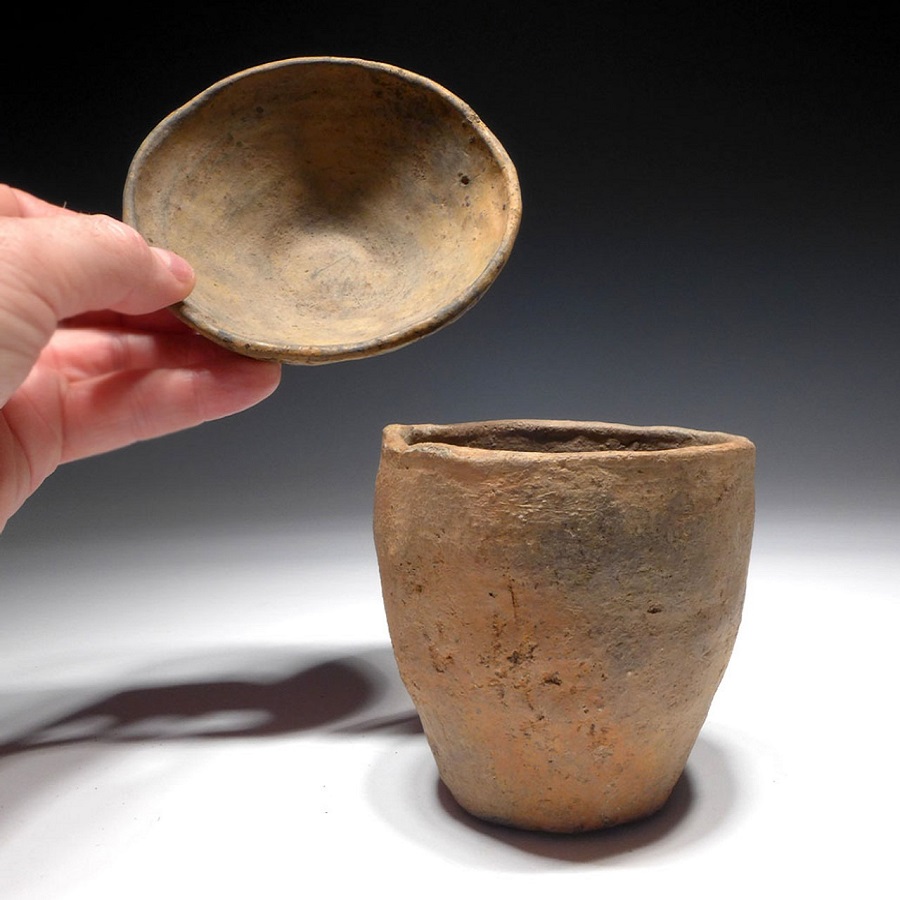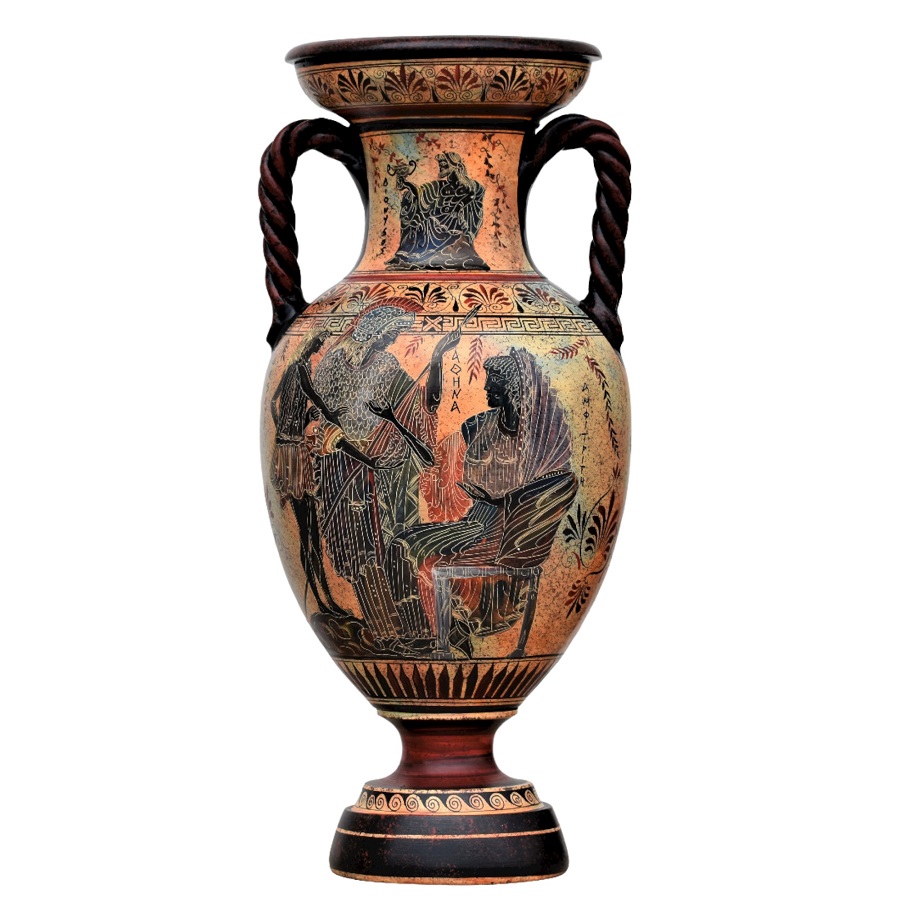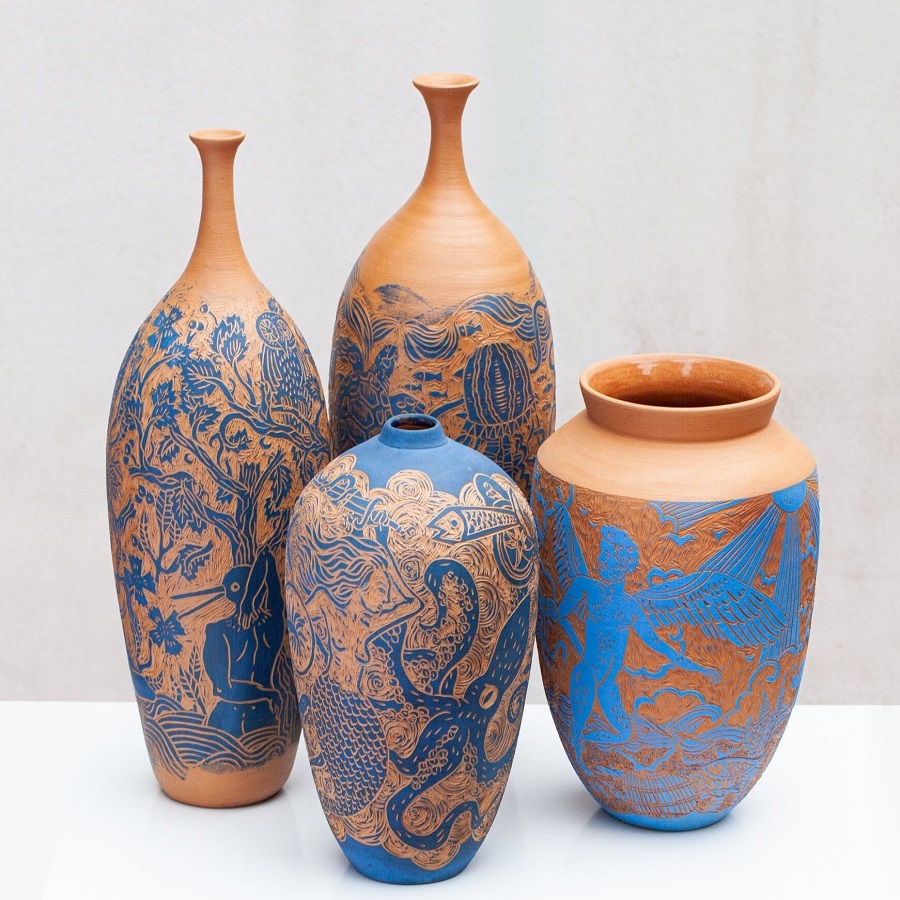The Origin of Ancient Ceramics
The journey of ancient ceramics began over 20,000 years ago. It was in the Neolithic age that humans discovered the art of turning clay into pottery. This practical art provided storage for food and water. As time passed, techniques improved and décor started to appear on ceramics. Key locations like China and the Middle East played pivotal roles in ceramic advancements. They crafted pottery that wasn’t just practical but also symbolical. Ancient ceramics showed the earliest forms of human expression in art. The civilizations used locally-sourced materials like clay and sand. They shaped them into pots and figurines, then fired them in kilns. The heat transformed these pieces into durable goods. This inventiveness marked a revolution in crafting everyday items. People began to trade ceramics, influencing different cultures. These historical artifacts give us clues about past societies and their ways of life.

Cultural Significance of Ceramic Artifacts
Ceramic artifacts serve as a bridge to our past. They help us to connect with the lives of ancient people. Through these artifacts, we discover the aesthetic values of lost civilizations. Often, they carry symbols that had deep meanings. These symbols told stories or held spiritual significance. They even indicated rank and societal status among the people.
Ancient ceramics were more than just household items. They played roles in ceremonies and religious rituals. For example, in death rituals, certain ceramics accompanied the deceased. This practice hinted at beliefs in an afterlife and ancestor worship. In living spaces, pottery could show wealth and taste. The craftsmanship revealed the owners’ social standing.
Moreover, ceramics acted as historical documents. They preserved writing systems and languages. Through study, we can learn how ancient people communicated. Also, because of their durability, ceramics outlast many other materials. They survive centuries underground and underwater.
Trade routes spread the popularity of certain ceramic styles. This exchange influenced art and culture across continents. Ancient ceramics show us global connections long before modern communication. Scholars use these objects to piece together a global history of trade and cultural exchange.
In essence, ancient ceramics hold keys to understanding human history. They reveal artistry, belief systems, and social structures. Collectively, they are valuable cultural treasures. They inform us about the evolution of human societies.
Major Ancient Civilizations and Their Ceramic Heritage
Ancient civilizations across the world have left a rich legacy through their ceramic creations. Among these, key societies stand out for their unique contributions to ceramic artistry.
China’s Porcelain Mastery
In China, the production of exquisite porcelain dates back to the Eastern Han dynasty. Chinese artisans mastered the art of high-temperature firing. They created fine, white porcelain, which later became known as ‘china’. Chinese porcelain often featured intricate blue designs on a white background. These pieces were highly sought after in international trade. Even today, Chinese porcelain is revered for its beauty and craftsmanship.
Mesopotamian Innovations
The Mesopotamian region, often called the cradle of civilization, introduced pottery wheel. This innovation vastly improved the efficiency of pottery making. Mesopotamian ceramics displayed detailed geometric patterns and narrative scenes. The use of glazes was a significant advancement. It helped in creating vibrant, lasting colors on the ceramics.
Egyptian Faience Wonders
Egyptians excelled in crafting faience, a glazed ceramic-like material. Unlike traditional clay pottery, faience had a glossy surface finish. The brilliant turquoise blue color of Egyptian faience simulated precious stones. They used these ceramics mainly for amulets, figurines, and small vessels.
Grecian Pottery and Mythology
Greek pottery is distinctive for its shapes, like amphorae and kraters, and stylized decorations. Scenes from myths and daily life graced the surfaces of Grecian pots. The iconic black-figure and red-figure painting techniques originated in Greece. These methods allowed artists to depict figures with great detail and expressivity.
The Varied Ceramics of the Americas
Pre-Columbian civilizations in the Americas created a diverse array of ceramics. From the Mesoamerican Mayans to the Andean Incas, each culture had its own styles. Mayan pottery featured complex scenes and hieroglyphs. Inca ceramics were often utilitarian but showed technical skill in shapes and ornamentation.
The ceramic heritage of these ancient civilizations continues to inspire and educate. Each piece holds the essence of their time, offering a glimpse into their world. It underscores the depth of human creativity and the rich tapestry of our collective past.
Techniques and Materials Used in Ancient Ceramics
The making of ancient ceramics was a blend of art and science. Different civilizations had their own unique methods and materials. They reflected the resources and skills of those times. We’ll explore some of these techniques and the raw materials that ancient artisans used.
Material Selection
Early potters chose natural resources, like clay, from their local environments. Clay types varied from region to region. Some were ideal for fine, thin pottery, others for more robust items. Sand or crushed stone was often added to clay. This process, called tempering, reduced cracking during drying and firing. Ancient artisans also experimented with minerals to create glazes. These coatings added color and water resistance to the ceramics.
Shaping and Forming Techniques
Hand-shaping was one of the earliest forming methods. Coiling, pinching, and slab construction were common. The invention of the pottery wheel, in regions like Mesopotamia, was revolutionary. It allowed for symmetrical and more refined shapes. Molds were also used for replicating items in large quantities.
Firing Practices
Firing transformed soft clay shapes into hard ceramics. The techniques varied among cultures. Basic open fires were the starting point. Kilns developed later, offering better heat control. Kilns evolved from simple pits in the ground to complex structures. Chinese kilns achieved high temperatures necessary for porcelain. They reached over 1200 degrees Celsius, creating the distinctive fine and translucent look of porcelain.

Surface Decoration and Finishing
After forming and before firing, artisans often embellished their work. Carving, painting, and incising added details to the surface. The use of slip, a liquid clay mixture, provided a way to add color. After firing, additional detailing might be done with paints or intricate glazing. Ancient civilizations also used wax resist and other methods to create patterns and designs.
Ancient ceramics reveal much about the technological advances of bygone eras. They show the resourcefulness and innovation of ancient craftsmen. Their techniques laid the groundwork for modern ceramic arts. As we study these artifacts, we gain insight into the rich heritage of ancient cultures. It’s not just their technical skills but their ability to fuse functionality with beauty that awes us still today.
The Evolution of Ceramic Designs Over Time
The design of ancient ceramics has transformed significantly across different periods and cultures. This evolution mirrors the changes in aesthetic preferences, technological advancements, and cultural exchanges.
In the early days, ceramics bore simple forms and minimal decoration. Natural pigments provided a basic palette for these initial works. As crafting skills progressed, so did the complexity of the designs. The combination of evolving tastes and improved techniques led to more sophisticated patterns and shapes.
In China, for instance, the shift from early earthenware to delicately painted porcelain shows a remarkable evolution. The famous blue-and-white porcelain emerged during the Yuan dynasty and continued to develop over time. This style featured scenes from nature, mythology, and everyday life. It became a hallmark of Chinese ceramics and influenced designs worldwide.
Mesopotamian pottery, notably, evolved from functional wares to intricately decorated pieces. The creation of the potter’s wheel spurred this transformation. Artisans could produce more uniform shapes, which they then adorned with elaborate painted motifs.
Greek ceramics journeyed from the geometric patterns of the early period to the narrative, figure-focused scenes of classical times. Techniques like the black-figure and red-figure allowed potters to depict detailed human and mythological stories.
The Americas witnessed a different trajectory in ceramic design. Indigenous cultures, separated by geography from Eurasia, developed distinct styles. The Mayans, for example, created complex scenes and hieroglyphs that chronicled their history and beliefs. The Incas, whose ceramics were mainly practical, still exhibited a keen sense of form and decoration.
Trade and interaction between regions facilitated a fusion of styles and techniques. This blend led to the emergence of new, hybrid designs, enriching the global ceramic heritage. Motifs and methods from one civilization found their way into the works of another, showcasing the interconnectedness of ancient societies.

Preserving Ancient Ceramics: Conservation and Restoration
Conservation and restoration of ancient ceramics are crucial. They help safeguard our cultural heritage. We employ various techniques to preserve these delicate items. The goal is to stabilize their condition. Also, we aim to prevent further deterioration. Professionals meticulously clean the surfaces. They remove any modern contaminants. Meanwhile, they are careful to keep original materials intact.
Restorers often face broken or missing pieces. They mend these using reversible materials. This means we can remove them later without harm. They fill gaps to restore the item’s original shape. They might also retouch colors carefully. This helps recreate the look from the ceramics’ era.
Climate control is vital in preserving ceramics. Museums maintain specific humidity and temperature. This reduces stress on the objects. Stable environments prevent cracking and other damage.
Scientists and restorers work together. They study ancient methods and materials. This knowledge guides restoration efforts. It ensures they respect historical accuracy.
Conservation also includes proper handling and storage. Museums use archival materials that do not react with the ceramics. They support items in a way that distributes weight evenly.
Public displays come with risks of light exposure. Museums use special lighting to minimize harm. They also rotate items on display. This limits the time each piece is exposed.
In summary, preserving ancient ceramics requires care, precision, and science. Restorers and conservators do this while honoring the legacy of ancient artisans. They ensure future generations can learn from these historical treasures.
Notable Collections and Exhibits of Ancient Ceramics Around the World
Remarkable collections of ancient ceramics can be found in museums across the globe. These exhibits showcase the artistry and history that these objects carry. Visiting such collections allows us to glimpse into the past civilizations and their exceptional craftsmanship.
- The British Museum, London: This museum houses a vast range of ceramics from different periods and cultures. Here, visitors can admire Chinese porcelain and Greek painted pottery. The collection helps us to understand the trade and cultural exchanges of ancient times.
- The Metropolitan Museum of Art, New York: Known for its comprehensive collection, the Met has an impressive array of ceramics. From pre-Columbian works to Islamic and Asian pottery, each piece narrates history.
- The Louvre, Paris: The Louvre’s extensive collection includes Mesopotamian, Egyptian, and Greek ceramics. It’s a showcase of the evolution of ceramic designs and techniques over millennia.
- The National Palace Museum, Taipei: This museum is renowned for its Chinese ceramics, particularly porcelain. The artifacts reflect the mastery of Chinese potters and the global impact of their work.
- The Hermitage Museum, St. Petersburg: Rich in cultural heritage, the Hermitage has an impressive display of ancient ceramics from around the world, highlighting the reach of ceramic art.
- The Museum of Pre-Columbian Art, Cusco: This museum holds a collection of pottery from ancient American civilizations. It reveals the diverse and rich artistic traditions of the Americas.
These exhibits teach us about ancient societies. They show us how ancient ceramics played roles in history. Museums work to preserve these treasures. They give us insight into the lives of our ancestors. By exploring these collections, we can better understand the significance of ancient ceramics.
The Role of Ceramics in Understanding Ancient Societies
Ancient ceramics are like windows into the lives of past civilizations. They offer a unique view, telling us how people lived, worked, and worshipped. Here’s how these ancient artifacts help us understand the societies that made them:
- Daily Life Insights: Pottery shards can reveal everyday activities. They show us what people ate and drank. Also, they provide clues about the trade and economy of the time.
- Artistic Expression: Ceramics were an art form. Shapes and decorations reflected the culture’s values and aesthetics. By studying these, we learn about their art and what they found beautiful.
- Technological Advances: The making of ceramics involved advanced techniques. These ranged from kiln construction to glazing. Understanding these methods gives us insight into the technological skills of our ancestors.
- Social Hierarchy: The quality and complexity of pottery can tell us about social status. Items buried with people show wealth and rank.
- Religious Practices: Many ceramic pieces were used in rituals. These give us knowledge about religious beliefs and the afterlife.
- Historical Records: Some ceramics have writing on them. They provide direct evidence of languages, trade agreements, or even tales from the past.
In short, ancient ceramics are key for archaeologists and historians. They help us piece together the history and culture of ancient societies. These artifacts are rich in detail and history. They let us dive deep into the human experience from thousands of years ago.